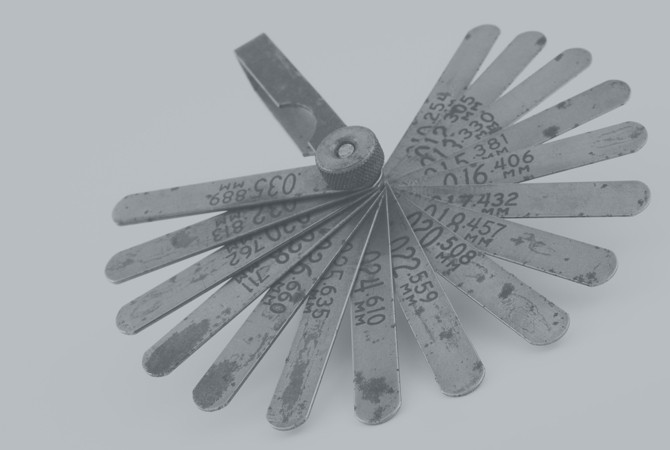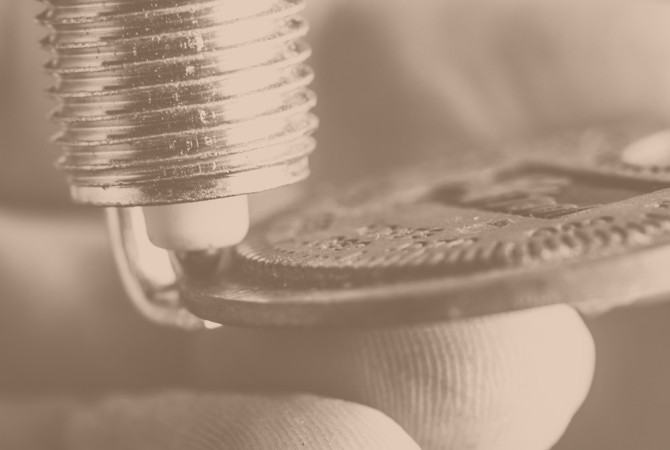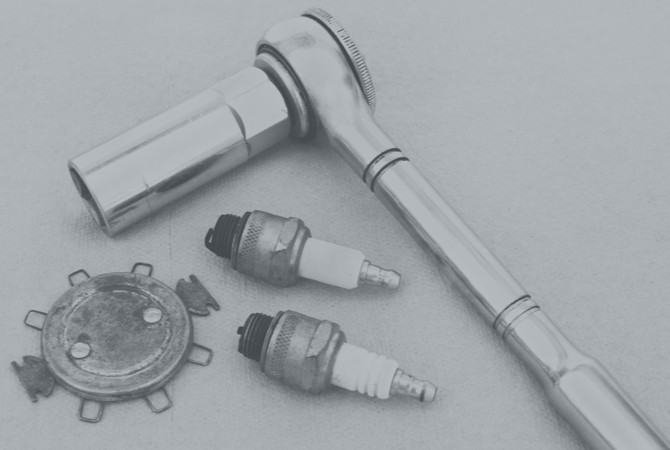Mind the Gap
For your engine’s spark plugs to work properly, the gap between the center and side electrodes needs to be calibrated perfectly to ensure optimal engine performance. Having the right gap ensures that the arcing occurs at the proper voltage to ignite the fuel and generates the combustion that makes the engine run. When you need to adjust the gap on a spark plug, it’s time to reach for a spark plug gap tool. Read on to learn about the different types of gap tools available and check out this article to learn how to gap a spark plug.
Why You Should Use a Spark Plug Gap Tool
Whether you’re looking to maximize the performance of your vehicle or just want to double check that the setting is right, using a spark plug gap tool is vital.
Assures optimal spark plug performance
Using a spark plug gap tool allows you to achieve the exact measurement recommended by the manufacturer. This boosts the efficiency of the spark plug by ensuring its putting out the correct spark to ignite the air and fuel mixture to power your vehicle. Check your owner’s manual for the correct spark plug gap for your vehicle.
Enables pre-gapped plugs to be adjusted
While many spark plugs advertise that they’re pre-gapped, that spark plug may work in many different engines and isn’t set for your specific vehicle. You may need to adjust the spark plug gap to ensure the vehicle performs as the manufacturer intended. Consult your owner’s manual for the right gap measurement and double check that the gap is correctly set to the vehicle's recommended setting when installing spark plugs.
Performance applications
From stock car and other racing applications to simply wanting more control over the settings of your spark plugs, checking the spark plug gap allows you to achieve your performance goals.
Help prevent premature plug failure
Having the proper spark plug gap can help reduce the chance of burned electrodes that can lead to premature spark plug failure. If the gap isn’t correct, the electrodes can burn, leading to failure.
Types of Spark Plug Gap Tools
Feeler Gauge

Featuring several metal blades or wires in different thicknesses, a feeler gauge looks like a pocket knife. Each blade or wire is a specific thickness marked in thousandths of an inch (imperial) or millimeters (metric). With a wide variety of blades or wires, you’ll be able to measure almost any gap.
Ideal for use with iridium spark plugs and other plugs containing precious metals, feeler gauges are more accurate than other types. A drawback is the fact that you’ll need a pair of pliers to bend the spark plug electrode since the blades will become deformed if you try using them to adjust the plug.
Coin Style Spark Plug Gauge

Named for its coin-like shape, a coin style spark plug gauge features measurements around the edge. The gauge’s outer edge is thin and as you move around the gauge, it gets thicker. This type of gauge is also called a ramp style gauge.
Economical, you can bend the spark plug electrode with this tool but accuracy can be an issue due to the gradual slope of the edge. Good for traditional copper spark plugs, it shouldn’t be used with iridium spark plugs. Using a coin gauge can damage the precious metals in this type of spark plug.
Wire Loop Spark Plug Gauge

The wire loop style is also shaped like a coin but it has several wire loops of different thicknesses protruding from the edge. As accurate as a feeler gauge, it has a hook to bend the spark plug electrode. A drawback is the limited number of loops, which can make it ineffective for odd gap sizes.
Learn more about quality spark plugs, find your part, or find where to buy your part today.
The content contained in this article is for informational purposes only and should not be used in lieu of seeking professional advice from a certified technician or mechanic. We encourage you to consult with a certified technician or mechanic if you have specific questions or concerns relating to any of the topics covered herein. Under no circumstances will we be liable for any loss or damage caused by your reliance on any content.